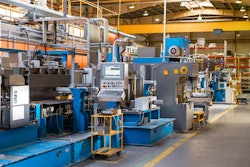
As 2023 quickly approaches, it’s important to look at the challenges manufacturers have faced over the last two years and emerging trends that will continue to impact the industry moving forward. After an uncertain and unstable period, the manufacturing industry is building back. However, constant market challenges, such as labor shortages and supply chain delays, continue to strain the industry’s immediate future. Succeeding in this environment demands business agility and innovation, which can only be achieved by leveraging technology. A pivotal solution is enterprise resource planning (ERP), which provides adaptability and enables resiliency.
To better understand the future of the manufacturing sector, evaluate the current state of the industry, the market challenges manufacturers are facing today and the solutions that are helping them continue growth in an unresolved market.
2022 manufacturing state and challenges
While 2022 saw encouraging signs, it was not without its challenges. The current economic environment poses numerous uncertainties with the potential to disrupt daily operations as well as long-term output. Labor shortages, high inflation rates and supply chain challenges all remain vital considerations for manufacturers to navigate. With economic difficulties persisting amidst demand increases, manufacturers require solutions that can boost growth and manage costs, while minimizing their operational bottlenecks.
Manufacturers have continued to navigate disruptions enhanced by the COVID-19 pandemic. Looking ahead, the same challenges of labor shortages and supply chain issues will continue to be focal points of a “New Normal” and must be considered when planning for the post-pandemic era of manufacturing.
Experts forecast the labor shortage in manufacturing to worsen before it improves. The National Association of Manufacturers predicts that 2.1 million manufacturing jobs could go unfilled by 2030. A key component of the unfilled roles is the lack of skilled workers-a long-time obstacle that has only been magnified by the current economic challenges. Compounding the skill gap is the speed at which manufacturing is adapting - as new skills evolve, older skills expire. For workers who are not fully equipped with baseline competencies, adapting quickly becomes that much more of a challenge.
Supply chain disruptions continue to make headlines in 2022. A report from Accenture found that 94% of Fortune 1000 companies experienced supply chain disruption as a result of COVID-19. Labor shortages play a significant role in supply chain disruptions, which have forced manufacturers to navigate long lead times and inflation rates. According to the Institute for Supply Management’s recent survey, the average lead times for production materials, capital equipment and supplies all reached the highest records since 1987. Looking ahead to 2023, manufacturers will need to prioritize data and analytic optimization, real-time monitoring, as well as innovative ways to add flexibility and agility.
Gaining advantages and growth through technology in 2023
Amidst the market challenges the manufacturing industry is facing, technology offers organizations the chance to combat workforce disruptions and thrive. The industry is seeing growing success as a result of business leaders initiating the change; according to Fictiv’s 2022 State of Manufacturing Report, over 90% of industry leaders responded that they are using or implementing digital manufacturing technology.
Manufacturers are increasingly utilizing process management solutions, for example ERP, to manage and maintain business operations. The flexibility and agility of these systems offers businesses the ability to manage remotely and securely, removing the hiccups that arose as a result of workplace changes. Per ECI’s most recent State of Manufacturing Digital Transformation report, 70% of manufacturers use an ERP solution to drive their day-to-day operations, and nearly 95% say that their ERP helped manage the impacts of the pandemic.
ERP solutions allow manufacturers to maneuver complex operations regarding supply chains and inventory, helping track and automate routine tasks. An integral component of this process is machine utilization monitoring, a trending technology that manufacturers are embracing more of. Leveraging this type of functionality ensures manufacturers are getting maximum productivity from their existing machines and employees, which critically mitigates the impact of current labor shortage challenges. As data and analytic optimization remains critical tools, ERP will continue to play a significant role in centralizing operations and grant further business transparency.
Through real-time data capabilities, manufacturers can be aware of issues or delays instantly, affording the opportunity to problem-solve. This flexibility also makes manufacturers better prepared to make smarter business decisions. When logistics are running smoothly across different facets of an organization, unnecessary delays and confusion can be identified before they become a problem and avoided.
While ERP solutions are valuable in many ways, leveraging one that is specific to the manufacturing industry will help tackle challenges specific to your businesses while bringing all critical business functions into the same software solution. Centralized data and information access help to avoid siloed information that can cause negative consequences. ERP works to seamlessly align product supply with demand and help increase efficiency amongst every step of manufacturing. As demand continues to rise across industries into 2023, manufacturers that implement an effective ERP solution to help navigate the market will thrive.
Understanding and leveraging trends
As the market evolves and confronts challenges, including labor shortages, high inflation rates and supply chain disruptions, manufacturers must understand and utilize available technologies to become agile and adaptable organizations. ERP solutions offer more with less and can help deliver competitive value in times of high disruption. Engaging with emerging and evolving technology means manufacturers will not miss out on business opportunities due to an outdated tech stack. Now is the time to invest in technology to turn risks into advantages and capture growth in this market.















